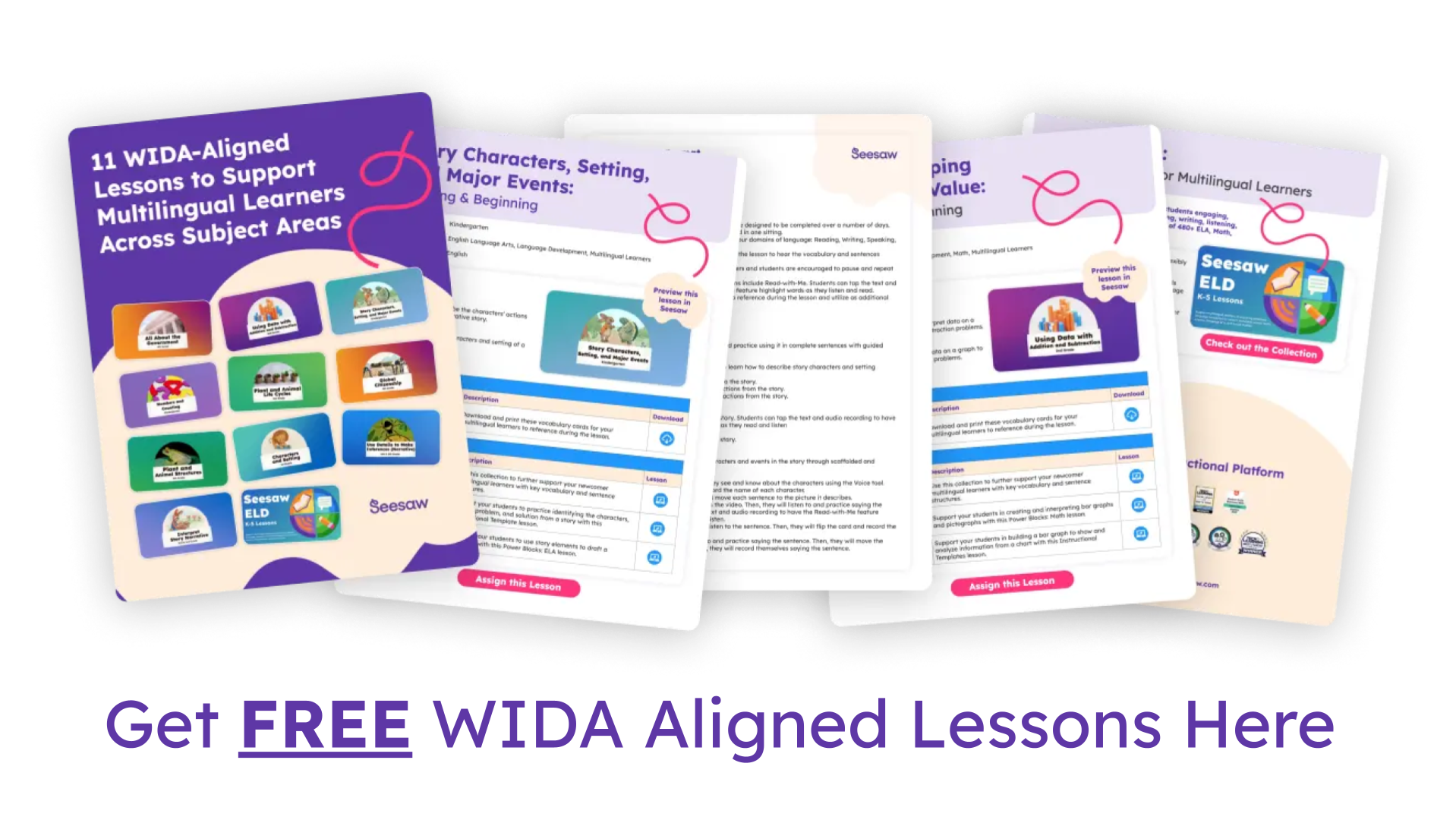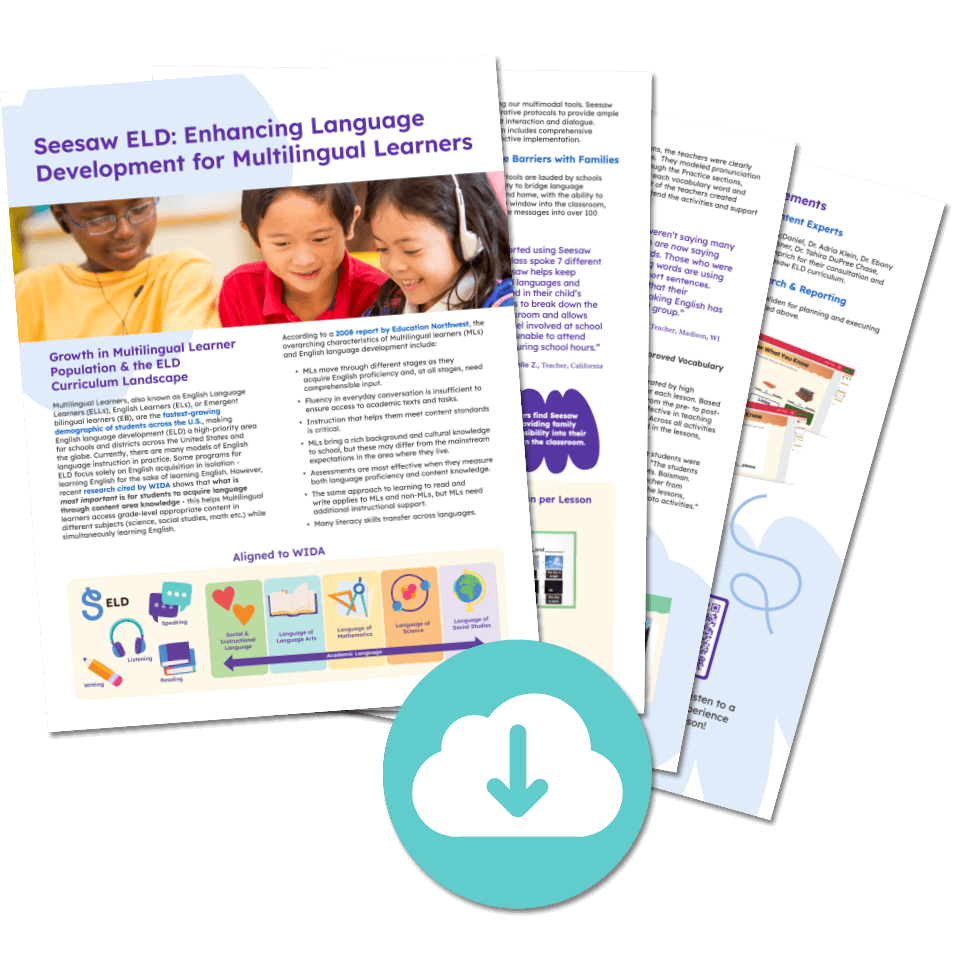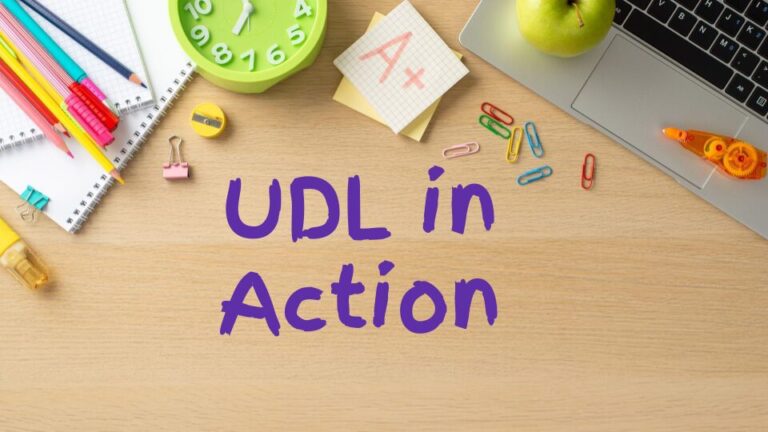As classrooms grow increasingly diverse, the need to support all learners has never been more critical. Robust English Language Development (ELD) programs offer an effective solution by providing multilingual learners with the necessary tools to succeed. This blog delves into evidence-based strategies that form the backbone of an effective ELD curriculum, essential in today’s educational landscape.
An effective ELD curriculum goes beyond merely teaching English; it embraces a holistic approach that addresses the comprehensive needs of multilingual learners. It integrates language development with academic content, values students’ cultural backgrounds, and ensures equitable access to educational opportunities, thus supporting students both academically and socially.
Evidence Based Tactics to Bridge the Language Gap
The strategies presented are not just for improving instruction and addressing language gaps, but also serve as a foundation for enhancing overall educational practices. As an educator, consider these tactics a springboard for developing your own innovative approaches to teaching and learning.
Creating an Inclusive Environment
Fostering a culture that celebrates diversity and encourages participation is essential for creating a welcoming classroom. An inclusive environment values each student’s unique background, promotes a sense of belonging, and invites families into the learning process. Teachers can celebrate cultural events, use diverse teaching materials, create classroom norms that respect and embrace differences, and communicate with families in their native languages and provide resources to help them support their children’s education at home.
Providing a Language-Rich Environment
Creating an immersive English language environment supports language acquisition by providing ample opportunities for practice. Teachers can incorporate activities like read-alouds, discussions, and writing exercises to immerse students in the language throughout the day.
Implementing Comprehensive ELD Curriculum’s
Adopting structured ELD curriculum tailored to multilingual learners ensures that these students receive systematic and targeted instruction. Comprehensive ELD curriculum are designed to develop English language proficiency across all four language domains—listening, speaking, reading, and writing. They include well-defined goals, consistent instructional strategies, and materials that cater to different proficiency levels, helping students progress in their language acquisition journey.
Assess and Monitor the Progress of Multilingual Learners
Schools should assess and monitor multilingual learners’ progress through formative and summative assessments, language portfolios, and observational checklists. Formative assessments, such as quizzes and presentations, provide immediate insights, while summative assessments, like standardized tests, measure overall proficiency. Language portfolios track growth with work samples and reflections, offering a holistic view of development. Observational checklists document daily language behaviors and skills during various classroom activities. This will allow teachers to customize lessons to meet diverse proficiency levels.
Provide Collaborative Learning Opportunities
Encouraging group activities and peer interactions promotes language development in a social context. Collaborative learning allows students to practice speaking and listening skills using English. Activities such as group projects, peer tutoring, and cooperative learning tasks are effective in engaging English Learners.
Seesaw has taken these evidence-based principles and integrated them into the design of their comprehensive ELD curriculum. Let’s explore how Seesaw is leading the way in English Language Development
Leading the Way in English Language Development
At Seesaw, our journey to excellence in English Language Development (ELD) is grounded in a deep understanding of evidence-based instructional practices. We recognize that the educational landscape is evolving, with schools facing increasing demands to meet the diverse needs of students from various linguistic and cultural backgrounds.
The WIDA standards framework defines four key language uses: narrate, argue, inform, and explain. This approach has been purposefully integrated into the design of Seesaw’s ELD curriculum. Each lesson provides opportunities for students to engage in authentic, meaningful tasks that involve reading, writing, speaking, and listening across subject areas such as English Language Arts, Mathematics, Science, and Social Studies.
Research demonstrates that content and language integrated learning can lead to enhanced language proficiency, deeper content knowledge acquisition, the promotion of critical thinking, problem-solving and analytical skills, as well as increased motivation and engagement among learners. Seesaw is committed to delivering the best possible solutions to schools, and has crafted our ELD curriculum with precision and innovation.
The Seesaw team collaborates with leading experts in the field, including Dr. Kia McDaniel, Dr. Adria Klein, Dr. Tamar Posner, Dr. Ebony Terrell Shockley, and Dr. Tahira DuPree Chase. These consultants bring decades of experience and expertise in ELD, as well as content-area specialties, to the development of our comprehensive ELD curriculum.
Research Validated English Language Development Solution
Seesaw’s supplemental curriculum is validated by LearnPlatform, a third-party edtech research company, to satisfy Level IV requirements according to Every Student Succeeds Act (ESSA). The programs systematic evidence-based practices and developmentally appropriate design leads to easer differentiation, stronger interaction, and more purposeful assessment. Read the full report outlining how Seesaw satisfies this validation here.
Climb the Language Ladder in Your Multilingual Classroom
With the Seesaw ELD package, K-5 English Language Learners can develop their language in a comprehensive and effective way. The program offers over 480 scaffolded lessons across core content areas, enabling students to practice reading, writing, listening, and speaking English in meaningful contexts based on input from experts and aligned to the WIDA framework.
With the program’s multimodal tools, English Language Learners are able to learn, practice, and gain confidence while honoring their unique strengths and experiences in a safe and inclusive learning environment. Providing accessibility for learners at all levels of language proficiency is possible by flexibly implementing developmentally appropriate lessons in multiple ELD models.
Seesaw ELD’s comprehensive resources, including lesson plans, teacher guides, and alignment tools, enable educators to seamlessly integrate effective language instruction into their classrooms. Multilingual learners can thrive and reach their full potential when schools invest in this robust ELD curriculum.
Try out the following lessons to support your students in language development:






